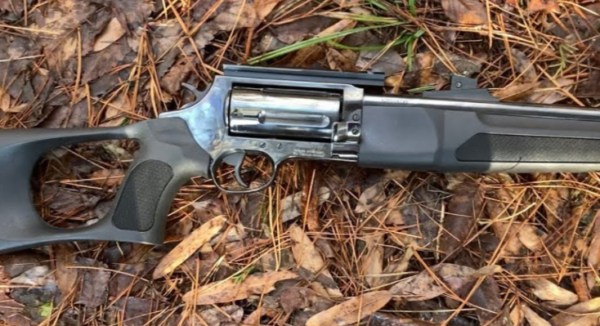Welcome to our friendly yet comprehensive comparison of two iconic rifles of the 20th century, the M1 Garand and the Lee Enfield.
Whether you’re a history buff, a firearm enthusiast, or just someone curious about military hardware, you’re in the right place!
We’ll dissect the strengths, weaknesses, and historical contexts of these two legendary firearms, providing an unbiased and reliable analysis.
So, sit back, grab a cup of coffee, and let’s dive into the fascinating world of the M1 Garand and the Lee Enfield.
M1 Garand vs Lee Enfield
1.M1 Garand (Guide)

Country of Origin
The M1 Garand was manufactured in the United States.
Developed by John Garand at the Springfield Armory in Massachusetts, the M1 Garand was the first semi-automatic rifle to be generally issued to the infantry of any nation.
Caliber
The M1 Garand is chambered for the .30-06 Springfield cartridge.
This powerful caliber, coupled with Garand’s semi-automatic design, made the M1 a formidable force on the battlefield.
Action Type
The M1 Garand utilizes a gas-operated, semi-automatic action.
This means that the rifle uses the gas from a fired round to extract the spent casing and chamber a new round, significantly increasing the rate of fire compared to bolt-action rifles.
Magazine Capacity
The M1 Garand has an internal magazine with a capacity of eight rounds. The magazine is loaded via an “en-bloc” clip which is inserted into the magazine from the top of the rifle.
Effective Range
The effective range of the M1 Garand is approximately 440 yards (402 meters) against a target the size of an enemy soldier.
However, with a skilled marksman behind the trigger, the M1 Garand can reach out much further, making it an effective tool for engaging targets at long distances.
Rate of Fire
The M1 Garand’s semi-automatic action allows for a relatively high rate of fire, especially when compared to its bolt-action contemporaries.
A trained soldier could expect to fire around 15-20 aimed shots per minute.
Weight
Fully loaded, the M1 Garand weighs about 10.6 pounds (4.8 kilograms).
This weight, while substantial, provides the benefit of reducing recoil and enhancing stability, ultimately contributing to the rifle’s accuracy.
Overall Length
The total length of the M1 Garand is approximately 43.5 inches (110.5 centimeters).
The rifle’s balanced dimensions enable soldiers to carry and handle it with relative ease, facilitating swift and efficient maneuvers in various combat situations.
Barrel Length
The M1 Garand features a barrel that spans 24 inches (61 centimeters) in length.
This sizeable length optimizes the rifle’s muzzle velocity, translating to improved accuracy and increased energy on target at longer ranges.
Sights
The M1 Garand is equipped with a rear aperture sight and a wing-protected front post.
This sight system, adjustable for both windage and elevation, allows shooters to achieve precise shot placement across its effective range.
The rear sight is known for its ease of adjustment and rapid target acquisition capabilities.
Bayonet Attachment
The M1 Garand comes with a bayonet lug, allowing for the attachment of a blade for close-quarters combat.
The standard issue bayonet model for the M1 Garand was the M1 Bayonet, which measures 10 inches in length.
The incorporation of a bayonet provided soldiers with a valuable tool for situations where combat became too close for effective rifle use, reinforcing the M1 Garand’s versatility on the battlefield.
Production Years
The M1 Garand remained in active production from 1936 to 1957.
During this period, over 6 million units were produced by several manufacturers, including Springfield Armory and Winchester.
The rifle’s production run coincided with some of the most significant global events of the 20th century, including World War II and the Korean War, which attests to its robust design and reliable performance.
Notable Features
The M1 Garand is renowned for several distinctive features. Its semi-automatic operation was groundbreaking for the time, affording soldiers rapid-fire capabilities that were not available with other standard-issue rifles.
The rifle’s ‘ping’ sound, produced when the en-bloc clip is ejected after the last round has been fired, is a unique auditory signal associated with the M1 Garand.
Furthermore, its gas-operated reloading mechanism, robust construction, and a high degree of accuracy over long distances contribute to the M1 Garand’s reputation as one of the most influential firearms in history.
Let’s Know About Some Models Of This Gun
M1 Garand Service Grade
The M1 Garand Service Grade is a classic model, typically seen during World War II.
It’s known for its reliability and durability under severe combat conditions.
This model is made from walnut and features a 24-inch barrel, providing excellent accuracy at mid-to-long range.
M1 Garand Special Grade
The M1 Garand Special Grade model is a step up from the Service Grade.
It boasts a new production stock and handguard set, giving it a polished, sophisticated look.
This model also features a specially calibrated rear sight, allowing for better precision and target acquisition.
M1 Garand Collector Grade
The Collector Grade M1 Garand is a top-tier model, highly sought after by gun collectors and enthusiasts alike.
It’s made with the highest quality materials and detailed craftsmanship, preserving the historical authenticity of the WWII period.
This model is notable for its original components and excellent finish, making it an ideal choice for collectors.
Tips for Use in the Future Carefully
Plan Ahead:
Always plan your actions in advance. This enables you to foresee potential issues and prepare for them accordingly.
Stay Informed:
Keep yourself updated with the latest information and trends related to your area of work or study. This helps in making informed decisions for the future.
Develop a Routine:
Create a structured daily routine that includes time for work, leisure, and self-improvement. This balance is essential for maintaining productivity and mental well-being in the long run.
Invest in Learning:
Dedicate time to learning new skills or enhancing current ones. Lifelong learning is a key to staying adaptable in a rapidly changing world.
Embrace Technology:
Utilize technology to streamline tasks and increase efficiency. Embrace digital tools that help in managing tasks or acquiring knowledge more effectively.
Prioritize Health:
Careful future planning includes prioritizing your health. Regular exercise, a balanced diet, and adequate sleep are crucial for long-term well-being.
Be Financially Smart:
Monitor your expenses, save regularly, and invest wisely. This provides financial security and peace of mind for the future.
2. Lee Enfield (Guide)


Country of Origin
The Lee Enfield rifle has its roots in the United Kingdom. It was born out of British ingenuity and industrial prowess, making its first appearance in the late 19th century as the standard rifle for British forces.
Caliber
The Lee Enfield primarily fires .303 British caliber bullets. This was the standard British cartridge for over 50 years and is renowned for its accuracy and hitting power over a long range.
Action Type
The weapon employs bolt action, a type of firearm action where the handling of cartridges into and out of the weapon’s barrel chamber is done manually by manipulating the bolt via a handle.
Magazine Capacity
The standard magazine capacity of the Lee Enfield is 10 rounds. This high capacity, along with the fast-cycling bolt action, made it a formidable weapon in the hands of a trained soldier.
Effective Range
With an effective range of up to 550 meters, the Lee Enfield was known for its exceptional reach and accuracy.
This range made it an ideal firearm for various combat scenarios, including both trenches and open battlefields.
Rate of Fire
The rate of fire refers to the capacity of the Lee Enfield to discharge rounds in a given timeframe.
The rifle’s bolt-action mechanism, renowned for its smooth and quick operation, enables it to fire up to 20-30 rounds per minute with practiced hands.
This rapid-fire rate was a significant advantage in combat situations, allowing soldiers to maintain consistent fire pressure on the enemy.
Weight
The weight of a firearm is a critical factor, impacting its portability and handling.
The Lee Enfield is relatively lightweight for its category, typically weighing around 8.8 pounds (4 kg) when unloaded.
Its manageable weight contributed to its popularity among soldiers, facilitating maneuverability and ease of use in diverse combat scenarios.
Overall Length
The overall length of the Lee Enfield measures approximately 44.5 inches (113 cm).
This measurement is inclusive of the stock and the barrel, making it a relatively compact weapon for its time.
The manageable length of the rifle enhances its weldability, making it a versatile firearm for both close-quarters combat and long-range engagement.
Barrel Length
The barrel length of the Lee Enfield is about 25.2 inches (640 mm). The length of the barrel plays a crucial role in the accuracy and velocity of the bullet.
The Lee Enfield’s barrel length was designed to optimize these factors, contributing significantly to the rifle’s reputation for precision.
Sights
The Lee Enfield is equipped with iron sights, constituting a rear aperture sight and a front blade sight.
These sights were known for their simplicity and effectiveness, providing soldiers with a reliable aiming system.
The user aligns the sights with their target, ensuring accurate aim and high hit probability.
Over time, variants of the rifle also integrated options for telescopic sights, further enhancing the firearm’s versatility and accuracy.
Bayonet Attachment
The Lee Enfield rifle was designed with a bayonet lug, allowing for the attachment of a bayonet – a sharp, pointed weapon used for close combat.
This attachment turned the Lee Enfield into a dual-purpose weapon, effective in both ranged and close-quarters combat.
The most commonly used bayonets with this rifle were the pattern 1907 and the spike “pig-sticker” bayonets, both infamous for their lethal efficiency in the heat of battle.
Production Years
The production of the Lee Enfield rifles started in the year 1895 and continued for more than six decades, with the final models manufactured in the 1960s.
This long production run makes it one of the longest-serving standard-issue rifles in history.
Multiple variants of the rifle were produced over the years to adapt to the changing needs of warfare, but the core design principles remained consistent, reflecting the timeless efficiency of this firearm.
Notable Features
The Lee Enfield is notable for several distinct features that set it apart from other firearms of its era.
The rapidity of its bolt-action mechanism, facilitated by its unique cock-on-closing design, allowed for a high rate of fire.
The large magazine capacity of ten rounds was another significant advantage, giving soldiers the ability to sustain fire for longer periods without reloading.
Furthermore, the rifle’s robust and sturdy construction made it exceptionally durable, and capable of withstanding harsh battlefield conditions.
Its effective range and inherent accuracy, coupled with its manageable weight and size, made it a versatile weapon suitable for varied combat roles.
Over time, the Lee Enfield also evolved to support telescopic sights and bayonet attachments, further enhancing its utility and effectiveness in battle.
Let’s Know About Some Models Of This Gun
No.1 Mk III
The No.1 Mk III is the classic Lee Enfield model that saw extensive use during World War I.
It boasts a 10-round magazine and a bolt-action mechanism, characterized by its robust construction and remarkable reliability in adverse battle conditions.
No.4 Mk I
The No.4 Mk I was predominantly used in World War II. It featured improvements in the form of a heavier barrel, an aperture rear sight, and simplified production components.
This model maintained the reliability and hardiness of its predecessor while offering enhanced accuracy.
No.5 Mk I (Jungle Carbine)
The No.5 Mk I, also known as the Jungle Carbine, was a lighter and shorter variant, designed for use in the challenging warfare conditions of the Asian Pacific regions during World War II.
It is best known for its flash hider, rubber butt pad, and its distinctive “lightning cuts” on the receiver and barrel, which were made to reduce weight.
L42A1 Sniper Rifle
The L42A1 Sniper Rifle was the final officially issued Lee Enfield model, serving the British Army until 1985.
It was a conversion of the No.4 Mk I into a 7.62mm NATO sniper rifle, which proved to be exceptionally accurate, rendering it a highly esteemed tool among marksmen.
Tips for Use in the Future Carefully
Plan Ahead:
Before using a product or service, conduct thorough research. Understand its functionality and potential issues to prepare for any unexpected occurrences.
Follow Instructions:
Always adhere to the given guidelines, instructions, or manual provided. They are there for a reason and following them can prevent misuse.
Regular Maintenance:
Perform regular checks and maintenance on your products to ensure they remain in good working condition.
Ask for Help:
If you are unsure about something, don’t hesitate to seek professional assistance. It’s better to ask than to make a mistake that could lead to serious consequences.
Safety First:
Always prioritize safety. Use products and services in a safe environment and follow safety measures provided.
Stay Updated:
Make sure to stay updated with the latest information or updates related to the product or service you are using. This could include software updates or safety recalls.
Recycle Responsibly:
When you are done using a product, dispose of it in an environmentally friendly manner. Consider recycling or donating.
Which is Best
When it comes to comparing the M1 Garand and the Lee Enfield, both have distinct qualities that have earned them a place in the annals of military history.
The M1 Garand, known as “the greatest battle implement ever devised” by General George S.
Patton was renowned for its semi-automatic action and robust construction, which gave American soldiers a significant advantage in fire rate during World War II.
Conversely, the Lee Enfield was admired for its high-capacity magazine and rapid bolt-action, making it a favorite among Commonwealth troops.
Both rifles have their pros and cons, so designating one as the best really depends on the specific requirements and preferences of the user.
To truly appreciate their qualities, it helps to understand the historical context in which they were used.
FAQs
Is the M1 Garand the best rifle ever made?
While the M1 Garand is renowned for its reliability and accuracy, stating it as the “best” rifle ever made would depend on specific user criteria and purpose.
Was the Lee Enfield the best rifle?
The Lee Enfield was an exceptional rifle in its era due to its rapid-fire capability and robust construction, but “best” is subjective and depends on various factors.
Which is better: M1 Garand vs. Kar98k?
Both rifles have their strengths, with the M1 Garand praised for its semi-automatic fire and the Kar98k for its precision, deciding “better” would come down to individual preference and usage.
What gun is similar to the M1 Garand?
The M14 rifle, succeeding the M1 Garand, bears many similarities in design and functionality, and is often seen as an improved version of its predecessor.


As the founder and owner of the domain “mygunsgeek.com”, I bring to the table a deep passion for firearms, combined with a strong commitment to sharing this knowledge with a wider audience. With years of experience exploring the inner workings of various firearms, from pistols to rifles, I have cultivated a vast expertise in this field. This has enabled me to create a platform that serves as a trusted resource for gun enthusiasts, providing comprehensive reviews, advice, and insights into the latest trends and advancements. I am dedicated to ensuring that my content is both informative and engaging, helping my readers make informed decisions about their firearm choices. For any inquiries or suggestions, feel free to reach out to me at wwwfffwww117@gmail.com. Your feedback is invaluable in shaping the content and direction of mygunsgeek.com.


